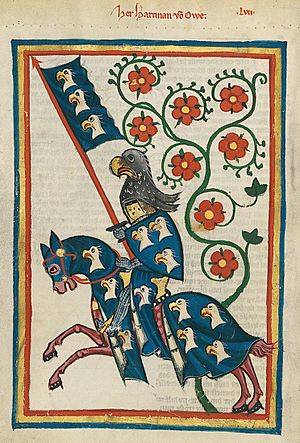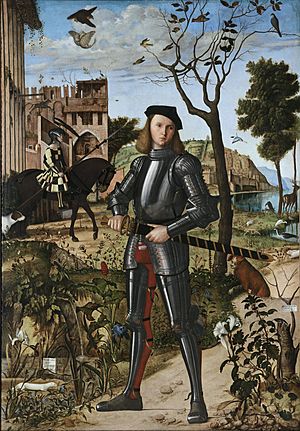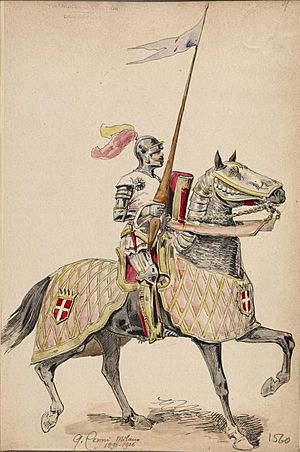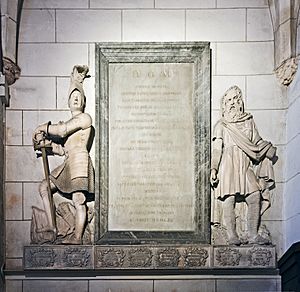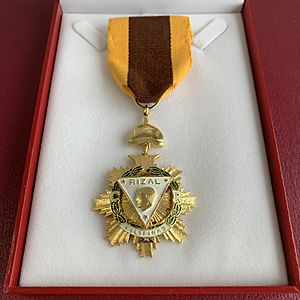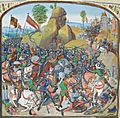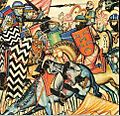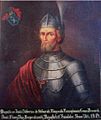Knight facts for kids
A knight was a brave warrior, usually a man, who was given a special title called knighthood. This title was given by a monarch (a king or queen), a bishop (a church leader), or another important person. It was a reward for their service, especially in battles.
In Europe long ago, knights were often mounted warriors, meaning they fought on horseback. During the High Middle Ages, being a knight meant you were part of the lower nobility, a bit like a noble family but not as high as a king.
By the Late Middle Ages, knights became known for following a special set of rules called chivalry. This was a code of conduct that guided how a perfect Christian warrior should act. Knights often worked for a lord, like a powerful noble. They were elite fighters, bodyguards, or even paid soldiers. They were often given land for their service. Lords trusted knights because they were very skilled at fighting on horseback.
Knighthood was strongly connected to horsemanship and events like jousts (where two knights charged at each other with lances). This connection lasted from the 1100s until the 1400s.
As time went on, new ways of fighting battles appeared. This meant that knights in their heavy armor were not as useful in war. However, the title of knight still remained important in many countries. The ideas of chivalry became very popular in medieval literature, like the stories of King Arthur and his knights of the Round Table.
Even today, there are still groups called orders of knighthood. These exist in some Christian Churches and in countries that have a history of knighthood. Examples include the English Order of the Garter and the Swedish Royal Order of the Seraphim. To become a knight today, a person is usually chosen by a head of state or a high-ranking church leader. This is to recognize their great achievements or service to their country or church. In the United Kingdom, the female equivalent of a knight is called a Dame.
Contents
Life as a Knight in the Middle Ages
Becoming a Knight: Training and Education
The system of knights was already well-known by the 900s. While a knight was mainly a military role, the term could also mean someone with a higher noble position, like a landowner. Important nobles would give land to their vassals (people who promised loyalty and service) in exchange for their loyalty, protection, and help. These nobles also provided their knights with what they needed, such as places to live, food, armor, weapons, horses, and money.
Lords could have many knights working for them. Knights with more experience in battle were highly sought after. So, any young noble who wanted to become a successful knight needed a lot of military practice. A knight who fought under another lord's flag was called a knight bachelor. A knight who fought under his own flag was called a knight banneret.
Early Years: The Page
To become a knight, a boy usually had to be born into a noble family. Most were sons of knights or lords. However, sometimes common people could also become knights if they showed amazing bravery in battle. Noble children were often raised by noble foster-mothers in castles until they were seven years old.
At age seven, boys were given the title of page. They were then sent to live in a castle and cared for by the castle's lords. Their training began early. They learned to hunt with huntsmen and falconers. They also studied with priests or chaplains. Pages later became helpers to older knights in battle. They would carry and clean armor, take care of horses, and pack bags. They even went with knights on long trips, sometimes to other countries. Older pages were taught by knights how to use swords, ride horses, and fight. They practiced with wooden swords and spears.
Teenage Years: The Squire
When a boy turned 15, he became a squire. This was a more serious step. In a religious ceremony, the new squire would make a promise on a sword that had been blessed by a bishop or priest. Squires had specific duties in their lord's household. During this time, squires continued their combat training. They were also allowed to own their own armor, instead of borrowing it.
Squires had to master what were called the “seven points of agilities”. These included riding, swimming and diving, shooting different weapons, climbing, taking part in tournaments, wrestling, fencing, long jumping, and dancing. All these skills were important for knighthood. They even practiced these skills while wearing armor!
Once a squire turned 21, he was old enough to become a knight.
The Knighting Ceremony: Accolade
The knighting ceremony, also called an accolade, usually happened during big celebrations. These could be holidays like Christmas or Easter, or sometimes at a noble or royal wedding.
The ceremony often started the night before with a special bath and a prayer vigil. On the day of the ceremony, the person becoming a knight would take an oath. Then, the person leading the ceremony would tap the new knight on the shoulders with a sword. This was called "dubbing."
Sometimes, squires or even regular soldiers could be made knights earlier than 21. This happened if they showed great bravery and skill in their service. For example, if they went on an important mission or protected a high-ranking person in battle.
Related pages
Images for kids
-
A battle between Turks and Christian knights during the Ottoman wars in Europe
-
A tournament from the Codex Manesse, showing a mêlée (a mock battle)
-
The Battle of Pavia in 1525, showing Landsknecht mercenaries with arquebuses (early guns)
-
The Battle of Grunwald in 1410, between Poland-Lithuania and the Teutonic Knights
-
Francis Drake (left) being knighted by Queen Elizabeth I in 1581. The queen taps him on each shoulder with a sword.
-
A small picture from Jean Froissart's Chronicles showing the Battle of Montiel
-
A battle from the Reconquista (Christian reconquest of Spain) from the Cantigas de Santa Maria
-
The tomb of William Marshal in Temple Church, London
See also
 In Spanish: Caballero para niños
In Spanish: Caballero para niños


